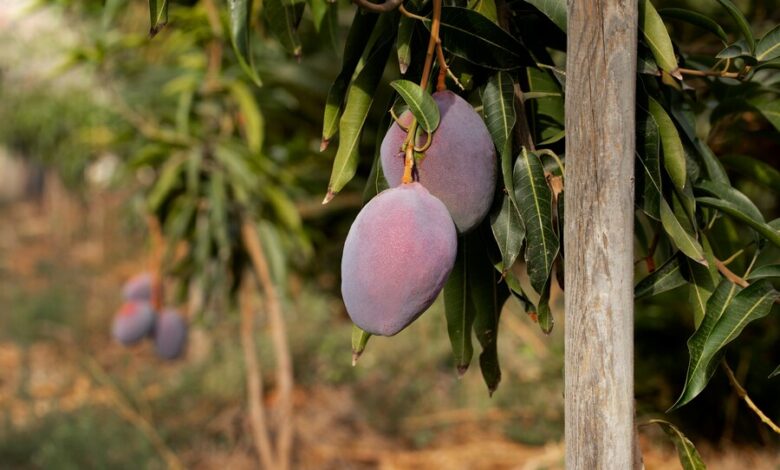
Gardening enthusiasts and home gardeners alike have long been enchanted by the allure of fig trees. With their lush foliage and succulent fruit, fig trees hold historical significance in gardening. However, cultivating a healthy and productive fig tree is not without its challenges. This post will guide you through the most common fig tree mistakes and provide practical tips to ensure your fig tree thrives.
The Historical Allure of Fig Trees
Figs have been a staple in gardens for centuries, revered not just for their delicious fruit but also for their symbolic cultural significance. Ancient civilizations, from the Greeks to the Egyptians, celebrated figs in their diets and mythology. Today, fig trees continue to captivate gardeners around the world with their rich history and the promise of sweet, juicy rewards.
Common Mistakes in Fig Tree Care
Over or Under-Watering
One of the most frequent mistakes in fig tree care is improper watering. Both over-watering and under-watering can stunt growth and reduce fruit production. Fig trees thrive in well-draining soil, so it’s crucial to strike a balance. Too much water can lead to root rot, while too little can cause the tree to suffer from drought stress.
To avoid this, monitor the soil moisture regularly. A good rule of thumb is to water when the top inch of soil feels dry. Ensure your fig tree has adequate drainage, and consider using mulch to retain moisture during hot weather.
Improper Pruning Techniques
Fig trees benefit immensely from regular pruning, yet many gardeners are unsure how to do it correctly. Improper pruning can lead to poor air circulation and reduced fruit yield. Pruning helps to shape the tree, remove dead or diseased branches, and promote healthy growth.
The best time to prune fig trees is during the dormant season, typically late winter to early spring. Focus on removing any weak or crossing branches. Aim for an open canopy to allow sunlight to penetrate and air to circulate, reducing the risk of disease.
Inadequate Sunlight
Fig trees are sun-loving plants that require plenty of light to produce fruit. Planting a fig tree in a shaded area can significantly hinder its growth and fruit production. It’s essential to choose a sunny spot where the tree can receive at least six to eight hours of direct sunlight daily.
If you notice your fig tree isn’t thriving, consider relocating it to a brighter location. In some cases, pruning nearby trees or shrubs can help increase sunlight exposure.
Practical Tips for Optimal Fig Tree Health
Soil and Fertilization
Fig trees are relatively low-maintenance but benefit from fertile soil. Conduct a soil test to determine its nutrient content and pH level. Figs prefer slightly acidic to neutral soil (pH 6.0-7.0).
Fertilize your fig tree in early spring and again in late summer with a balanced fertilizer. Avoid high-nitrogen fertilizers, as they can promote leafy growth at the expense of fruit production. Organic compost or well-rotted manure is an excellent choice for enriching the soil naturally.
Pest and Disease Management
Fig trees are susceptible to various pests and diseases, including aphids, scale insects, and fungal infections. Regularly inspect your tree for signs of infestation or disease. Early detection is key to preventing significant damage.
Use organic pest control methods whenever possible. Beneficial insects like ladybugs and predatory mites can help keep pest populations in check. Additionally, practicing good garden hygiene, such as removing fallen leaves and debris, can reduce the risk of fungal infections.
Mulching and Winter Protection
Mulching is a simple yet effective way to retain soil moisture, regulate temperature, and suppress weeds around your fig tree. Apply a layer of organic mulch, such as straw or wood chips, around the base of the tree, leaving a gap around the trunk to prevent rot.
In colder climates, fig trees may require winter protection to survive freezing temperatures. Wrapping the tree with burlap or using a tree guard can help insulate it from the cold. Alternatively, potted fig trees can be moved indoors during the winter months.

Real-Life Success Stories from Fig Tree Enthusiasts
Sarah’s Story: From Struggle to Success
Sarah, a passionate gardener from California, faced numerous challenges with her fig tree. Despite her best efforts, the tree remained small and yielded little fruit. After researching fig tree care and consulting with experienced gardeners, Sarah realized she had been over-watering her tree.
Armed with new knowledge, Sarah adjusted her watering schedule and added mulch to retain moisture. She also relocated the tree to a sunnier spot in her garden. Within a year, Sarah’s fig tree flourished, producing an abundance of sweet, juicy figs.
Tom’s Tale of Pruning Precision
Tom, a retired horticulturist from Florida, always had a green thumb, but his fig tree seemed to resist his efforts. The tree grew tall and leafy but bore few fruits. Determined to succeed, Tom attended a local gardening workshop and learned the art of proper fig tree pruning.
By implementing the pruning techniques he had learned, Tom transformed his fig tree. He opened up the canopy, improved air circulation, and encouraged new growth. The following season, Tom was rewarded with a bountiful harvest of figs, much to his delight.
Maria’s Mulching Method
Maria, a novice gardener from Texas, struggled with her fig tree’s health during the scorching summer months. The tree’s leaves wilted, and the fruit was small and sparse. Seeking advice from a gardening community, Maria discovered the benefits of mulching.
She applied a thick layer of straw mulch around the base of her fig tree, ensuring the roots stayed cool and moist. The difference was remarkable. Maria’s fig tree thrived, and she enjoyed a continuous supply of delicious figs throughout the season.
Conclusion
Cultivating a healthy and productive fig tree requires understanding its unique needs and avoiding common pitfalls. By mastering the art of watering, pruning, and providing adequate sunlight, you can ensure your fig tree thrives. Remember to enrich the soil, manage pests and diseases, and protect your tree during winter.
The satisfaction of growing your own figs and enjoying their sweet, succulent flavor is well worth the effort. Whether you’re a seasoned gardener or a novice, these tips and real-life success stories will inspire you to take your fig tree cultivation to the next level.
Share your fig tree experiences and advice in the comments below. Let’s foster a community of fig tree enthusiasts who can learn and grow together!
Happy Gardening!



